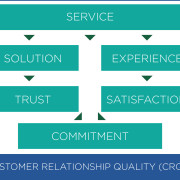Turning Business Intention Into Reality
At our recent breakfast event in Edinburgh, one of the topics covered was the challenges associated with turning business intent into reality.
During the event, it was highlighted that there are a number of factors which affect the ability of an organisation to execute upon their intent and turn this into reality. Our keynote speaker, John Yarwood from ATOS, shared an example from his organisation of how they bring in new partner relationships. At the outset, there is an intent – but also a degree of uncertainty – to how this will work. He shared some key insights into how they execute this intent into a reality for mutual benefit for both organisations.
During a working session with attendees, we opened this discussion up further to enable everyone to share their own experiences. Below are a few of the key insights that came out of these discussions.
How an organisation moves from a statement/vision/brand promise etc. to reality is met with mixed degrees of success. So for example, the point was made that many of us are familiar with hearing statements of intent such as:
- ‘We will put the customer at the heart of our business’
- ‘We are going to be the best in the market at delivering customer service’
- ‘We will provide a market leading capability’
- ‘We will be number 1 in the market for…’
- ‘We will be the partner of choice for..’ etc.
And yet in many cases, the reality has not lived up to this. The failure to turn this intent into reality may be down to a number of reasons, and we have selected just a few examples shared from attendees own experience:
- Poor leadership – failing to get buy in to change
- ‘What does this mean to me?’ – inability to convey/articulate a vision into what this actually means and looks like to all across the business
- Poor planning and /or inability to execute plans – inadequate thought given to the extent of the work involved; lack of capability to execute
- Change fatigue within an organisation/inertia – many will have lived through change initiatives that have eventually gone away in the past as they haven’t been followed through so pay lip service knowing the latest one is likely to go the same route in due course.
- Pace of change is too fast – people are lost along the way
- Misalignment of external and internal vision and behaviour, e.g. can’t expect employees to continually live the brand of being best in market if they are not treated in the same way
To counter these challenges, there were some great discussions on approaches that have helped to turn intent into reality. Again, we have picked out a few:
- Getting teams to co-create and develop shared objectives/outcomes increases ownership and buy-in – often easier in smaller organisations or self-contained functions.
- The importance of leadership – having an individual who sets the tone and direction – is key for successful transition from intent to reality
- Linked to the above is the need for authenticity – values and messages have to be lived by the organisation, not just be slogans. Also the information flow must go both ways through the organisation, so that the executive leaders are in touch with the reality on the ground, and the frontline understand the overall direction and purpose
- Not being afraid to fail but knowing when you have failed and not keeping chasing the bad.
Turning intention into reality can be challenging – but by adopting a disciplined and engaging approach, success is far more likely.
- Great insights shared by cross sector business leaders - February 27, 2024
- Strategic Account Management Training – the importance of reflection - February 1, 2024
- Building a High Performing Account Management Team - November 28, 2023






